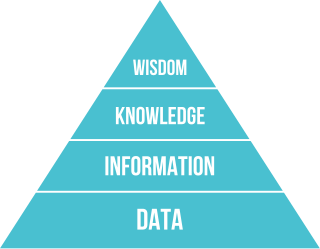Related Research Articles
A hierarchy is an arrangement of items that are represented as being "above", "below", or "at the same level as" one another. Hierarchy is an important concept in a wide variety of fields, such as philosophy, architecture, design, mathematics, computer science, organizational theory, systems theory, systematic biology, and the social sciences.
A hierarchical organization is an organizational structure where every entity in the organization, except one, is subordinate to a single other entity. This arrangement is a form of a hierarchy. In an organization, the hierarchy usually consists of a singular/group of power at the top with subsequent levels of power beneath them. This is the dominant mode of organization among large organizations; most corporations, governments, criminal enterprises, and organized religions are hierarchical organizations with different levels of management, power or authority. For example, the broad, top-level overview of the general organization of the Catholic Church consists of the Pope, then the Cardinals, then the Archbishops, and so on.

Management is the administration of an organization, whether it is a business, a non-profit organization, or a government body.

An organization, or organisation, is an entity – such as a company, an institution, or an association – comprising one or more people and having a particular purpose.
Human relations movement refers to the researchers of organizational development who study the behaviour of people in groups, particularly in workplace groups and other related concepts in fields such as industrial and organizational psychology. It originated in the 1930s' Hawthorne studies, which examined the effects of social relations, motivation and employee satisfaction on factory productivity. The movement viewed workers in terms of their psychology and fit with companies, rather than as interchangeable parts, and it resulted in the creation of the discipline of human relations management.
A management information system (MIS) is an information system used for decision-making, and for the coordination, control, analysis, and visualization of information in an organization.
The term "marketing mix" is a foundation model for businesses, historically centered around product, price, place, and promotion. The marketing mix has been defined as the "set of marketing tools that the firm uses to pursue its marketing objectives in the target market".
A hierarchical database model is a data model in which the data are organized into a tree-like structure. The data are stored as records which are connected to one another through links. A record is a collection of fields, with each field containing only one value. The type of a record defines which fields the record contains.
An organizational structure defines how activities such as task allocation, coordination, and supervision are directed toward the achievement of organizational aims.
Span of control, also called span of management, is the term used in business management, particularly human resource management. The term refers to the number of subordinates or direct reports a supervisor is responsible for.
In a corporation, a stakeholder is a member of "groups without whose support the organization would cease to exist", as defined in the first usage of the word in a 1963 internal memorandum at the Stanford Research Institute. The theory was later developed and championed by R. Edward Freeman in the 1980s. Since then it has gained wide acceptance in business practice and in theorizing relating to strategic management, corporate governance, business purpose and corporate social responsibility (CSR). The definition of corporate responsibilities through a classification of stakeholders to consider has been criticized as creating a false dichotomy between the "shareholder model" and the "stakeholders model" or a false analogy of the obligations towards shareholders and other interested parties.
Theory Z is a name for various theories of human motivation built on Douglas McGregor's Theory X and Theory Y. Theories X, Y and various versions of Z have been used in human resource management, organizational behavior, organizational communication and organizational development.
Management consists of the planning, prioritizing, and organizing work efforts to accomplish objectives within a business organization. A management style is the particular way managers go about accomplishing these objectives. It encompasses the way they make decisions, how they plan and organize work, and how they exercise authority.
A flat organization has an organizational structure with few or no levels of middle management between staff and executives. An organization's structure refers to the nature of the distribution of the units and positions within it, also to the nature of the relationships among those units and positions. Tall and flat organizations differ based on how many levels of management are present in the organization and how much control managers are endowed with.

The DIKW pyramid, also known variously as the DIKW hierarchy, wisdom hierarchy, knowledge hierarchy, information hierarchy, information pyramid, and the data pyramid, refers loosely to a class of models for representing purported structural and/or functional relationships between data, information, knowledge, and wisdom. "Typically information is defined in terms of data, knowledge in terms of information, and wisdom in terms of knowledge".
A database model is a type of data model that determines the logical structure of a database. It fundamentally determines in which manner data can be stored, organized and manipulated. The most popular example of a database model is the relational model, which uses a table-based format.
Staff management is the management of subordinates in an organization. Often, large organizations have many of these functions performed by a specialist department, such as personnel or human resources, but all line managers are still required to supervise and administer the activities and ensure the well-being of the staff that report to them.
Holacracy is a method of decentralized management and organizational governance, which claims to distribute authority and decision-making through a holarchy of self-organizing teams rather than being vested in a management hierarchy. Holacracy has been adopted by for-profit and non-profit organizations in several countries.
Workplace democracy is the application of democracy in various forms to the workplace. It can be implemented in a variety of ways, depending on the size, culture, and other variables of an organization.
Inverted pyramid may refer to: